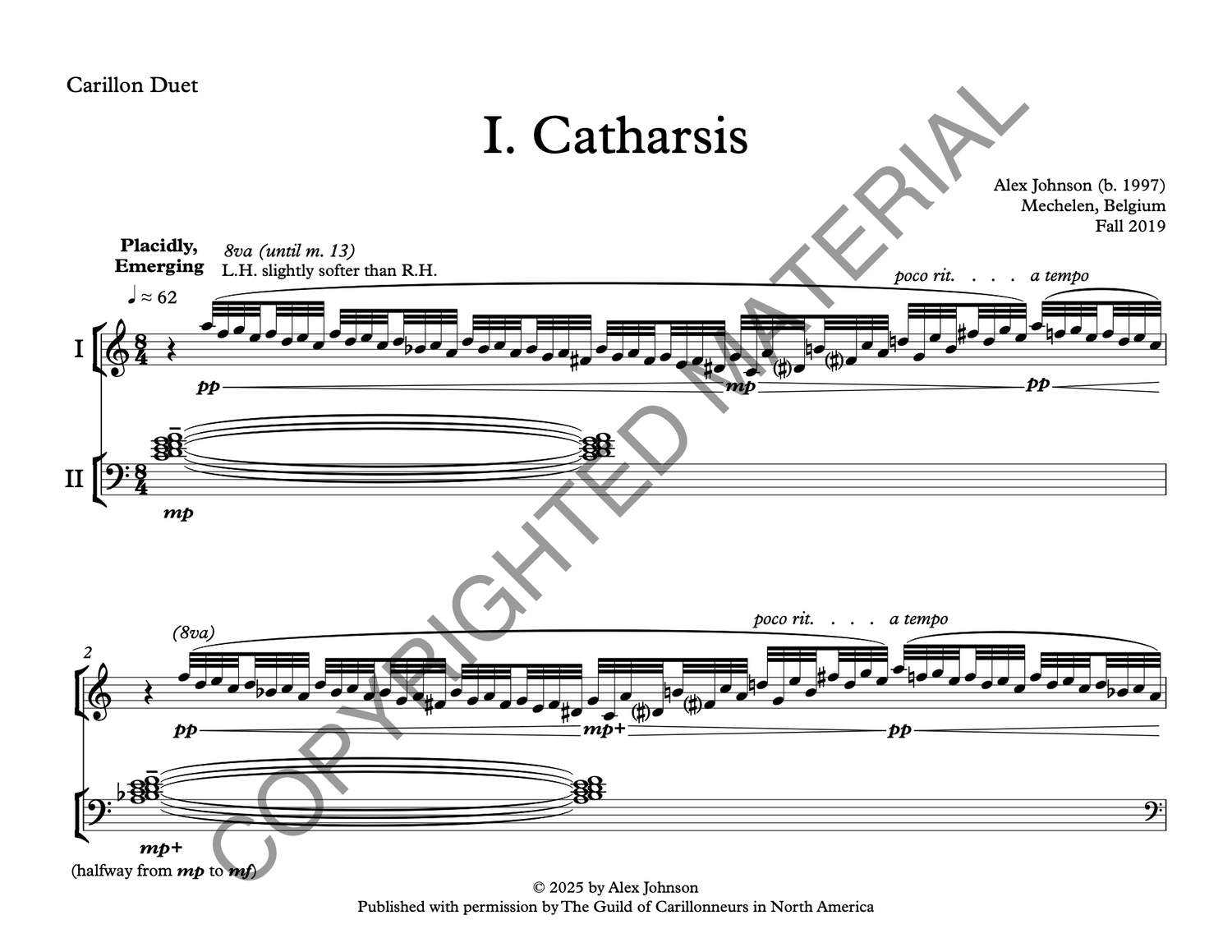
Catharsis & Oasis
Movements
- Catharsis
- Oasis
Performance notes
- Catharsis
- This movement is a duet. It may be programmed without the second movement.
- Measures 13–31
- Primo: The single staff shown is yours. Play it without regard for what secondo is playing. Gestures in the bass clef may be performed in the pedal by reaching your feet underneath the other performer or in the manual by leaving the bench and walking around the other performer.
- Secondo: Continuously alternate the two chords from m. 12 independently of what primo is playing. Steadily accelerate from 42 bpm at the end of m. 12 to 96 bpm by the start of m. 31. Remain pianissimo. Err on the side of accelerating too quickly rather than too slowly: it would be better to arrive at 96 bpm before m. 31 than need to accelerate very rapidly towards the end of the section to account for lingering too long on slower tempos.
- Oasis
- This movement is a solo. It may be programmed without the first movement.
Program notes
The genesis of this piece was a temporal musing. I wanted to find a gesture that would be interesting to present simultaneously extremely fast and extremely slow. Thus is the opening section of Catharsis (mm. 1-12). The first six beats of 32nd notes in the primo part, slowed down and grouped into chords, form the secondo part. The middle section (mm. 13-31) presents an "illusion", as Pak Nyoman Suadin, the gamelan instructor at Eastman School of Music, might have called it. I was a member of Eastman's Gamelan Sangi Wani for two years during my undergraduate, during which time one of the pieces we performed featured a section with two distinct tempi operating at the same time. Nyoman called it an "illusion". After that rather cerebral opening, the piece turns more emotional: the illusion dissolves, a crescendo to "The Catharsis", and the second movement, Oasis, an expressive meditation.
While the combination of temporal musings and cathartic spiritual journey may be a tad disjunct, there is a consistent harmonic thread to hold the piece together. The "illusion" section is entirely fragmentations and manipulations of the opening 32nd note gesture. The catharsis motif (m. 37, secondo), which is hinted at in the "illusion", is based on the B♭ and F♯ being the first two accidentals to appear in the opening 32nd notes. And for a while this piece was only the first movement; but on a whim one day in Mechelen, from the final chord of Catharsis, the entirety of Oasis blossomed forth.
—Alex Johnson

![[PDF] Catharsis & Oasis First-page preview of "Catharsis"](https://d2j6dbq0eux0bg.cloudfront.net/images/9481258/4957943485.png)